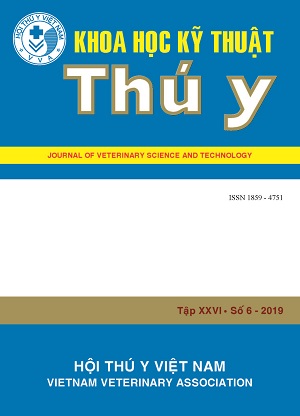Detection of Porcine circovirus type 3 and some other pathogens in respiratory disease complex
Abstract
The aim of this study was to identify initially the presence of PCV3, characterize ORF2 characteristics and co-infection with other pathogens in porcine respiratory disease complex (PRDC) in the post-weaning piglets. The PCV2 detection rate in the PRDC pigs was highest (88.3%; 53/60), followed by PRRSV (55.0%; 33/60), Mh (51.7%; 31/60), Hp (44.3%; 27/60), CSFV (13.3%; 8/60) and the lowest rate was PCV3 (6.67%; 4/60). The co-infection groups of PRDC cases were PCV2 + PRRSV (48.3%), PCV2 + Mh (50.0%), PCV2 + Hp (38.3%) and PCV2 + Mh + Hp (23.3%). In term of PCV3, all 4/4 cases were co-infected with PCV2, PRRSV, Mh or Hp; of which 4/4 co-infected with PCV2, 2/4 co-infected with PRRSV and Mh and 1/4 co-infected with Hp and 0/4 co-infected with CSFV. The low nucleotide sequence similarity level among 4 isolates of PCV3 (98.2 to 97.2%) was determined, of which two isolates PCV3_AV and PCV3_BL were separately grouped from the remaining PCV3 isolates and reference strains in phylogenetic tree. The studied results showed that there was the presence of PCV3 in the PRDC cases and they began presenting a high diversity on genotype, therefore further research to identify the role of pathogenicity among the strains with different genotype will be very necessary.

